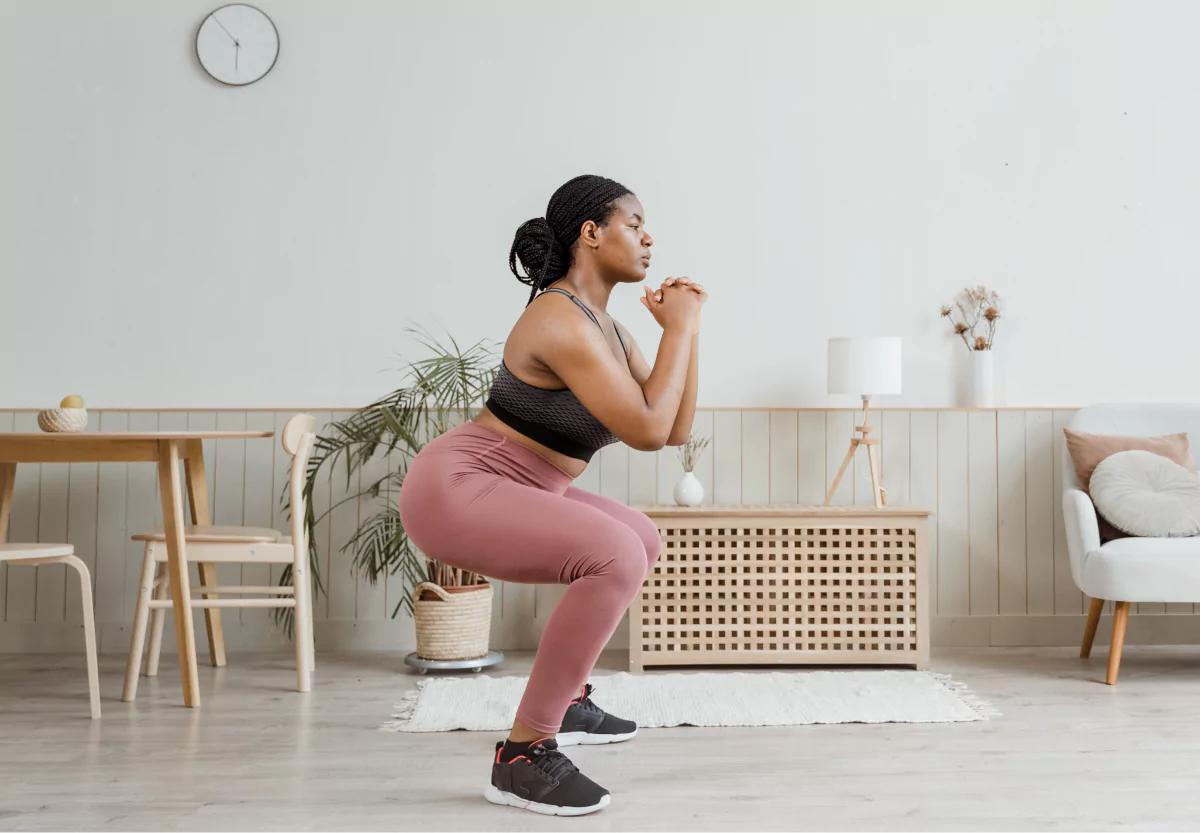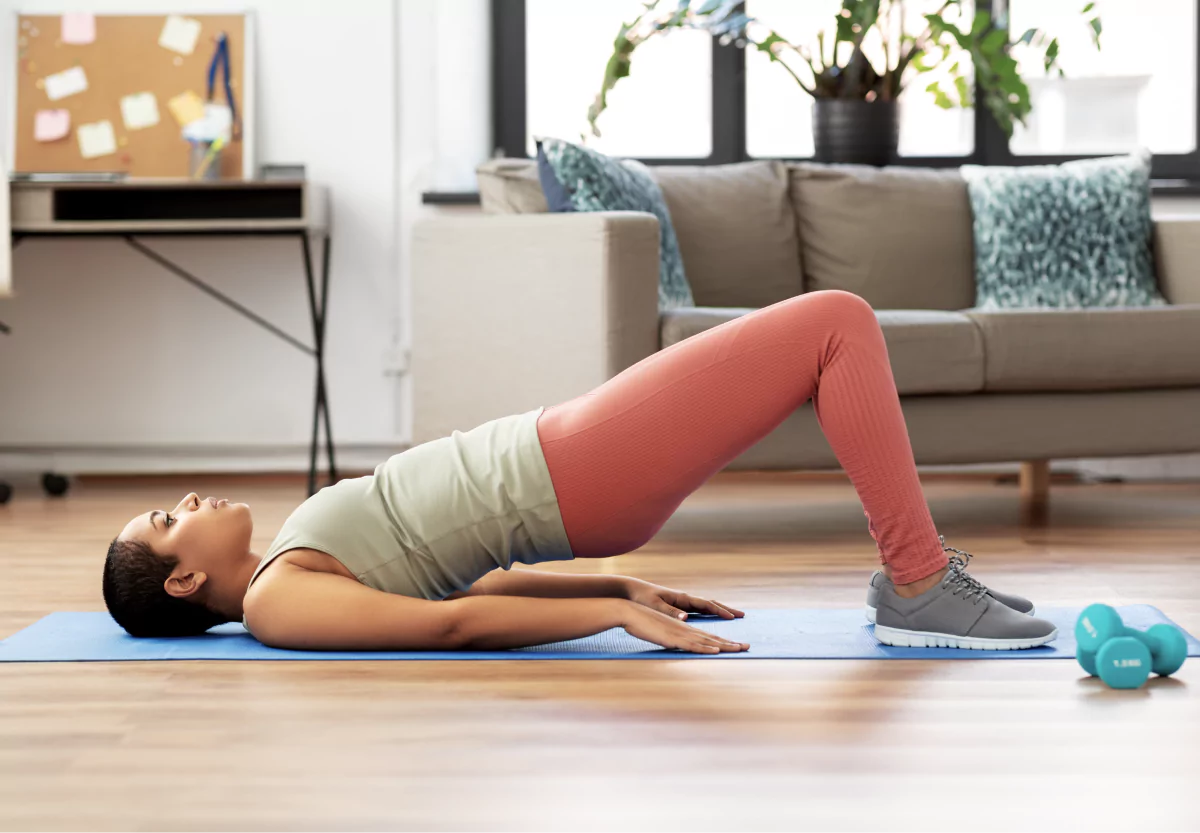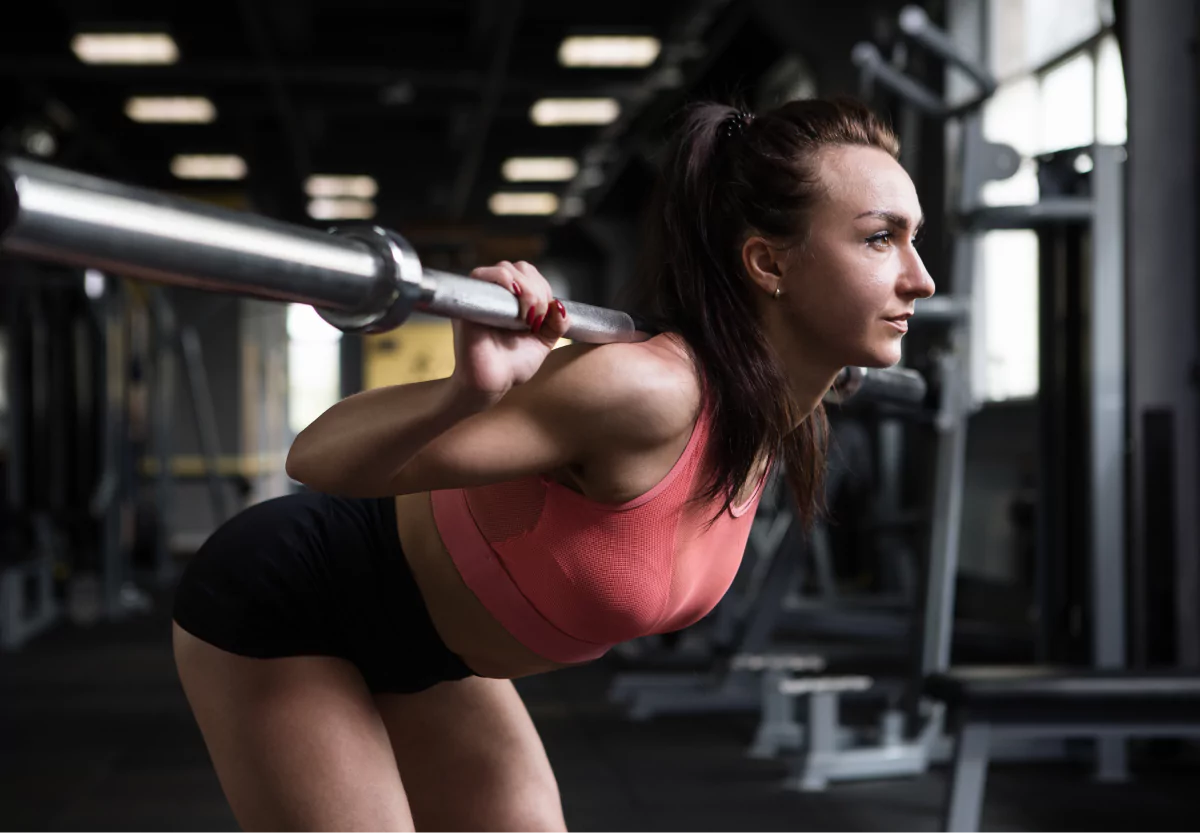11 Lower Bodyweight Exercises To Add to Your Leg Day

Key Takeways
Contrary to what some people may believe, you can build muscle with bodyweight resistance exercises. And if you’re new to resistance training, adding some leg exercises to your routine can be a great place to start.
While most people focus on shedding excess pounds through cardio workouts, it is essential to also strengthen each muscle group in the body for optimal fitness, including supporting a healthy weight. Incorporating strength training in your lower body is also a great way to support insulin sensitivity.
Read on for 11 lower body weight exercises you can use to start improving your balance, mobility, and metabolic health today.
1) Squats

The squat movement works the majority of the muscles in the lower body, including the quadriceps, hamstrings, glutes, and calves. As a compound exercise, squats also engage the core, improving overall balance and stability.
Squats are a great exercise to start with if you’re a beginner because they can easily be customized based on your fitness level. You can do a bodyweight squat, a goblet squat with dumbbells, or a barbell squat with a weight of your choice.
How To Do This Exercise:
- Stand with your feet shoulder-width apart, toes pointing forward or slightly outward.
- Lower your body by bending at the knees and hips, as if you're sitting back into a chair.
- Lower your body until your thighs are parallel to the ground, or as far as you can go while maintaining good form.
- Push through your heels and use your glutes, hamstrings, and quads to stand back up to the starting position.
Start with lower weights and gradually increase as you get stronger. Don't forget to warm up before doing any weight-bearing exercises to prevent injury.
2) Pistol Squats

A variation of the traditional squats, the pistol squat focuses on the strengthening of one leg at a time. It’s one of the best exercises for glutes and hamstrings out there. Pistol squats require a bit more balance and flexibility, so you might have to work up to it slowly over time.
Step-by-Step Guide For Pistol Squats:
- Begin by standing with your feet hip-width apart, core tight, and torso upright.
- Slowly lift your right heel while shifting your weight onto the left leg.
- Extend your arms in front of you and slowly lower your body while keeping your left leg bent.
- Continue lowering yourself until your right leg is parallel to the ground.
- Push back up with your left leg until you are standing straight again and repeat.
Incorporating pistol squats into your home workout routine can help build lower body strength, increase balance and flexibility, and challenge your fitness level. You can easily modify this exercise by performing it while holding a weight or by using a resistance band.
3) Lunges

Lunges are a great compound exercise that helps you strengthen and tone multiple muscles at the same time, by targeting the quadriceps, glutes, hamstrings, and calves. You can make your lunges harder by holding a pair of dumbbells in each hand or by adding a jump at the end of the movement.
How To Do This Exercise:
- Begin by standing with your feet hip-width apart.
- Take a large step forward with your right foot, keeping your left foot in place.
- Lower your body towards the ground by bending both knees, keeping your back straight and your core engaged.
- Pause at the bottom of the lunge, then push off with your right foot to return to the starting position.
Remember to breathe steadily throughout the exercise, and keep your core engaged to maintain stability.
4) Curtsy Lunges

Curtsy lunges are a variation of the regular lunge that targets different muscles in your lower body. By shifting the focus to the back leg, curtsy lunges work your inner thighs more than regular lunges.
Step-by-Step Guide For Curtsy Lunges:
- Start standing with your feet hip-width apart and your hands on your hips.
- Take a large step back with your right leg, crossing it behind your left leg as you lower your body down into a lunge position.
- Keep your left knee directly over your ankle and your right knee pointing toward the ground.
- Push back up to standing position and repeat on the other side.
This exercise engages your quads, hamstrings, and calves to create a well-rounded lower body workout.Another variation of the curtsy lunge is to lift your knee up to your chest after returning to a standing position.
5) Standing or Elevated Calf Raises

This exercise targets the calf muscles, specifically the gastrocnemius and soleus muscles located in the back of the lower leg. Calf raises are great for building calf strength and improving ankle mobility.
How To Do This Exercise:
- Stand with the balls of your feet on the edge of a step or raised surface. Make sure your heels are hanging off the edge of the step.
- Slowly raise your heels up as high as possible.
- Pause for a second at the top, then slowly lower your heels back down.
This exercise can be done with bodyweight or with added weight, such as holding a dumbbell. Try holding a dumbbell in one hand or both hands to add weight and increase the difficulty of the exercise!
6) Step-Ups

Step-ups engage your core muscles, quads, and calves to maintain balance and stability throughout the movement.
How To Do This Exercise:
- Stand facing a step or bench with feet hip-width apart.
- Place one foot on the bench, step up and bring the other foot up to meet it.
- Step down first with one foot, then the other, and repeat.
- Engage your core muscles and keep your back straight throughout the exercise. Make sure your knee is over your ankle when you step up.
- Start with a low step and gradually increase the height as you progress.
A stair step, box, or chair is all you need to get these reps in. Now, get to it!
7) Glute Bridges

This exercise primarily works the glutes (including the gluteus maximus, gluteus medius, and gluteus minimus), hamstrings, and lower back. Glute bridges are great for building and strengthening these muscles, as well as improving overall hip flexibility and mobility.
How To Do This Exercise:
- Lie down on your back with your knees bent and feet flat on the ground.
- Place your arms by your sides with your palms facing down.
- Squeeze your glutes and lift your hips up towards the ceiling until your body forms a straight line from your shoulders to your knees.
- Hold this position for a few seconds, then slowly lower your hips back down to the starting position.
To make this exercise more challenging, place a weight on your hips or lift one foot off the ground while performing the exercise. Remember to engage your glutes throughout the entire exercise for maximum effectiveness.
8) Good Mornings

Good mornings primarily work the lower back muscles, including the erector spinae and multifidus muscles. They also engage the hamstrings, glutes, and core muscles to stabilize the spine during the movement.
Step-by-Step Guide For the Good Morning:
- Begin by standing with your feet shoulder-width apart.
- Position the barbell across your upper back, resting it on your traps.
- With your knees slightly bent, begin to hinge at the hips and lean forward.
- Keep your back flat, and lower your torso until it's parallel to the ground.
- Engage your glutes and hamstrings to raise your torso back up to starting position.
When performing this exercise, it's important to use proper form and avoid rounding the back, as this can put unnecessary stress on the spine. Incorporating this movement into your workout routine can help improve posture, core stability, and overall strength in the lower back and posterior chain.
9) Skaters

This lower body workout emulates the movement of a speed skater, simultaneously building strength, power, and balance. It does so by working your quads, glutes, hamstrings, and calves, all while engaging your core for stability. Here’s how to do it:
How To Do This Exercise:
- Start with feet hip-width apart and knees slightly bent.
- Take a large step to the right, bringing your left foot behind your right ankle.
- Keep your left hand on your hip and raise your right arm out to the side.
- Push off with your right foot and repeat the movement to the left.
- Move quickly, emulating the movement of a speed skater.
- Complete 10-12 reps on each side and then take a 30-second rest between each set.
Make this move more fun by closing your eyes and visualizing yourself zipping across the ice on skates!
10) Lying Side Leg Raises

This exercise primarily targets the hip abductor muscles located on the outer thighs. It also engages the core muscles for stabilization.
Step-by-Step Guide For a Lying Side Leg Raise:
- Lie down on one side, with your legs extended straight and stacked on top of each other.
- Place your bottom arm out straight to provide support and stability.
- Engage your core muscles and lift your top leg straight up towards the ceiling while keeping it straight and in line with your body.
- Hold the lifted position for a few seconds, engaging the outer thigh muscles.
- Slowly lower the leg back down to the starting position.
- Repeat for a desired number of repetitions, then switch to the other side.
Performing this exercise regularly can improve hip stability, balance, and overall lower body strength.
11) Mountain Climbers

The constant movement of the exercise engages your abdominal muscles, including your rectus abdominis, transverse abdominis, and obliques. Mountain climbers also activate your upper body muscles, including your shoulders, chest, and triceps. The movement engages your quads, hamstrings, and glutes.
How To Do This Exercise:
- Start in a high plank position with your hands placed firmly on the ground, shoulder-width apart and your toes tucked firmly behind you.
- Engage your core muscles and bring your left knee towards your chest, as far as you can without moving your hands or right foot.
- Return to the starting position and quickly switch to bring your right knee towards your chest.
- Repeat this movement continuously, as quickly as possible, for a set amount of time or number of repetitions.
Remember to keep your body in a straight line throughout the exercise and maintain a steady breathing pattern. Mountain climbers can also provide an excellent full-body workout!
Find the right Nutrisense programto turn insight into progress.
Go Beyond Glucose Data with Nutrisense
Your glucose can significantly impact how your body feels and functions. That’s why stable levels are an important factor in supporting overall wellbeing. But viewing glucose isn't enough. Nutrisense, you’ll be able to learn how to use your body's data to make informed lifestyle choices that support healthy living.
One-to-one coaching
Sign up to access insurance-covered video calls to work with a glucose expert: a personal registered dietitian or certified nutritionist who will help tailor your lifestyle and diet to your goals.
Monitor and measure what matters
With the Nutrisense CGM Program, you can monitor your glucose with health tech like glucose biosensors and continuous glucose monitor (CGM)s, and analyze the trends over time with the Nutrisense App. This will help you make the most informed choices about the foods you consume and their impact on your health.
Find your best fit
Ready to take the first step? Start with our quiz to find the right Nutrisense program to help you take control.

Heather is a Registered and Licensed Dietitian Nutritionist (RDN, LDN), subject matter expert, and technical writer, with a master's degree in nutrition science from Bastyr University. She has a specialty in neuroendocrinology and has been working in the field of nutrition—including nutrition research, education, medical writing, and clinical integrative and functional nutrition—for over 15 years.




